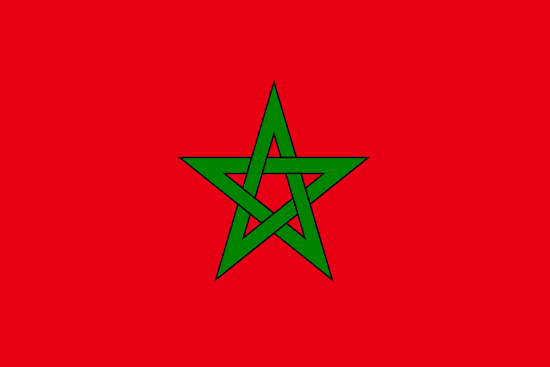"تطوان أم الدنيا | Tetouan, mother of the world"
About:
Tétouan, a city in northern Morocco, was founded in the 3rd century BC by the Mauretanian Berber ruler, Juba II. It flourished under the Marinid dynasty in the 14th century but was abandoned until its reconstruction by Andalusian refugees in the late 15th century. It served as the capital of the Spanish protectorate in Morocco from 1913 to 1956. Today, Tétouan is known for its rich history, Andalusian influence, and UNESCO-listed Medina.
When to visit:
Tetouan, a city in northern Morocco, experiences a Mediterranean climate characterized by hot, dry summers and mild, wet winters. The best time to visit Tetouan for a holiday is during the spring months of April and May, or in the fall from September to November. During these periods, the weather is pleasant with mild temperatures, making it ideal for exploring the city's rich history, vibrant culture, and stunning architecture. Summer can be very hot in Tetouan, so visiting during the shoulder seasons is recommended for a more comfortable and enjoyable experience.
When to avoid:
Traveling to Tetouan, Morocco, during the summer months of July and August can be a challenging experience due to the intense heat and high humidity levels. These months are considered the worst time to visit Tetouan for holidaymakers seeking a comfortable and enjoyable travel experience. The scorching temperatures can make outdoor activities and sightseeing uncomfortable and may limit the enjoyment of the city's attractions. It is advisable to plan your visit to Tetouan during the cooler months of spring or autumn for a more pleasant travel experience.
"Winter Season (Dec-Feb)"
In Tetouan, Morocco, the coldest and wettest period is from November to February. Average temperatures range from 8°C to 16°C. Rainfall peaks in December, with about 100mm falling over an average of 11 days. Sunlight is reduced to around 5 hours a day, with significant cloud cover. An average day for a visitor might involve brisk morning walks under overcast skies, afternoon showers, and cool, damp evenings. Despite the chill, the city's charm remains, with its whitewashed buildings glistening under the rain, and steamy cafes offering respite from the cold.
"Summer (June-September)"
In Tetouan, Morocco, the warmest part of the year typically spans from June to September, with July and August being the peak summer months. During this period, the average high temperatures range from 26°C (79°F) to 30°C (86°F), while the average low temperatures range from 18°C (64°F) to 20°C (68°F).
Rainfall is minimal during these months, with July being the driest month of the year. The summer months typically receive less than 10mm of rainfall in total, making it the perfect time for outdoor activities.
Sunlight is abundant during the warmest part of the year in Tetouan, with an average of 10 to 11 hours of daylight per day. The sun usually rises around 6:30 AM and sets around 8:30 PM, providing plenty of time to explore the city and its surroundings.
Humidity levels are relatively comfortable in the summer, typically ranging from 60% to 70%. However, it can occasionally feel a bit muggy especially in the afternoons.
Cloudiness is relatively low during the warmest part of the year. You can expect clear or mostly clear skies on most days, with occasional partly cloudy days.
For a visitor, a typical day in Tetouan during the warmest part of the year would feel warm to hot, especially in the afternoons. Mornings and evenings are more comfortable, with a gentle breeze from the Mediterranean Sea. Despite the heat, the low rainfall and abundant sunshine make it a great time to explore the city's historical sites, enjoy the local beaches, and partake in outdoor activities.
Language:
In Tetouan, a city in northern Morocco, the most commonly spoken languages are Darija, a Moroccan Arabic dialect, and Berber. Darija is widely used in daily life and is the primary language of communication. Berber, on the other hand, is spoken by the indigenous Amazigh people. Spanish is also fairly common due to historical ties, and French is used in business and government contexts.




